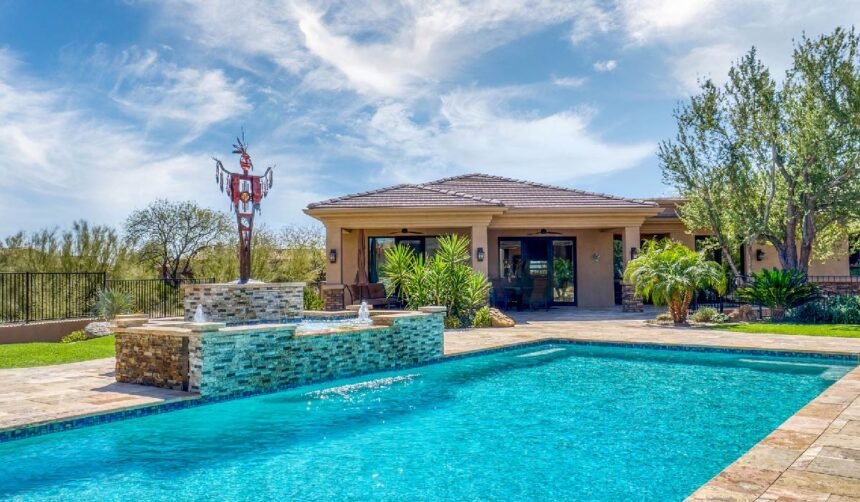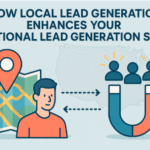In Los Angeles, where every drop of water counts, homeowners are facing a new kind of challenge—maintaining beautiful pools without draining their wallets or the planet’s resources. With California’s ongoing drought regulations and rising water prices, pool maintenance has become a balancing act between comfort and conservation.
That’s where pool resurfacing steps in as a smart, long-term solution. Far from being just a cosmetic upgrade, resurfacing can dramatically improve water retention, reduce evaporation, and lower operating costs. For LA homeowners, it’s not just about keeping their pools sparkling—it’s about staying smart in a city where water is as precious as sunshine.
Understanding Pool Resurfacing and Its Impact on Water Use
What Is Pool Resurfacing, and Why Does It Matter?
Pool resurfacing involves replacing the old, worn-out surface of a swimming pool with a fresh layer of durable material such as fiberglass, quartz aggregate, or pebble finish. Over time, older plaster pools become porous and develop cracks that lead to leaks and higher evaporation rates.
Resurfacing seals these vulnerabilities, creating a smooth, water-tight layer that keeps your pool’s water level steady. In water-conscious cities like Los Angeles, this efficiency translates into significant annual savings and a smaller environmental footprint.
Problem — Aging Surfaces and Constant Refills
Most pools in Southern California were built decades ago, and their plaster surfaces have endured years of exposure to UV radiation, chemicals, and temperature fluctuations. The result? Tiny surface cracks that gradually leak water, even when unnoticed.
A typical pool can lose thousands of gallons each year through evaporation and seepage. When combined with regular topping-off, this leads to escalating water bills and wasted resources—something no Los Angeles homeowner wants amid state water restrictions.
Solution — Modern Resurfacing Materials That Seal and Protect
Today’s resurfacing options use non-porous, eco-friendly materials that minimize water absorption and prevent leaks. Fiberglass resurfacing, for instance, creates a smooth, watertight shell that resists cracking. Quartz and pebble finishes not only look elegant but also hold up against harsh chemical treatments.
These materials work like armor for your pool—locking in water and keeping it there for the long haul.
The Hidden Link Between Pool Maintenance and Water Waste
The Role of Chemical Balance in Water Efficiency
Maintaining pH balance and chlorine levels in Los Angeles’s warm climate can be tricky. When surfaces erode or stain, chemical reactions become inconsistent, forcing owners to drain and refill water more often to reset balance.
Resurfaced pools, especially those coated with smooth fiberglass or epoxy finishes, require fewer chemicals because algae and bacteria struggle to stick to the sleek surface. This means clearer water, fewer chemical shocks, and less need for draining cycles—a key water-saving advantage.
Problem — Rough, Porous Surfaces Increase Chemical Demand
Old plaster pools act like sponges. Their porous texture traps debris and microorganisms, consuming chlorine faster and leading to cloudy water. To correct this, pool owners often overuse chemicals or perform partial water changes.
This constant adjustment wastes both water and money while exposing swimmers to harsh residues.
Solution — Low-Maintenance Finishes That Stay Cleaner Longer
With modern eco-resurfacing materials, pool owners enjoy cleaner water that stays balanced longer. Non-stick coatings prevent algae growth, which means fewer vacuuming sessions and less backwashing of filters.
In Los Angeles, where energy and water conservation go hand-in-hand, resurfacing offers an efficient way to cut maintenance time by 40% and reduce chemical dependency—all while keeping the water crystal clear.
How Resurfacing Reduces Evaporation in Hot Climates
Los Angeles Climate and Pool Evaporation Rates
Los Angeles enjoys over 280 sunny days per year, but that sunshine has a hidden cost. Warm air, low humidity, and frequent wind all contribute to evaporation—causing pools to lose an inch or more of water weekly during summer.
When a pool’s surface becomes worn or uneven, heat absorption increases, accelerating evaporation even more. This creates a never-ending cycle of topping off water levels and higher bills.
Problem — Energy Inefficiency and Heat Retention
Concrete and old plaster surfaces trap heat, raising water temperature and speeding up evaporation. They also increase energy costs when pool owners rely on chillers or covers to stabilize temperature.
The issue is compounded by LA’s frequent Santa Ana winds, which strip moisture from open pools.
Solution — Reflective, Insulating, and UV-Resistant Coatings
Resurfacing with reflective gelcoats or light-colored fiberglass helps bounce solar radiation away, keeping water cooler and reducing evaporation naturally. Some modern finishes even include heat-reflective pigments that maintain steady temperatures without energy-intensive cooling systems.
This eco-conscious innovation makes resurfacing not just an aesthetic choice—but an energy and water efficiency strategy.
The Cost Factor — How Resurfacing Saves Money Over Time
The Real Cost of Doing Nothing
Many homeowners delay resurfacing because of perceived upfront costs, not realizing how much they lose annually through water waste, chemical overuse, and energy inefficiency. A leaking or rough-surfaced pool can quietly drain hundreds of dollars in utility bills each year.
As water prices continue to rise in Southern California, the cost of inaction only grows.
Problem — Short-Term Fixes Don’t Address Long-Term Waste
Some pool owners attempt patchwork repairs, like adding sealants or quick-fix coatings. These temporary solutions often fail under the stress of heat and chemical exposure, leading to repeat jobs and more water loss.
Solution — Investing in Long-Term Sustainability
High-quality resurfacing, using materials like fiberglass or quartz aggregate, can last 15–25 years with minimal upkeep. Beyond saving water, it cuts costs on electricity, chemicals, and cleaning equipment.
In Los Angeles’s current water economy, resurfacing isn’t just an upgrade—it’s an investment in sustainability and savings.
Environmental Benefits and California Water Regulations
Meeting State Standards for Conservation
California’s Water Conservation Act continues to push for efficient home water use. Pools with outdated designs or leaks fall short of these evolving standards. Resurfacing helps homeowners meet compliance while improving property value.
By preventing waste and supporting water retention, resurfaced pools align with Los Angeles’s green infrastructure goals.
Problem — Non-Compliant Pools and Wasted Resources
Old, leaky pools can consume as much water as several households combined. Non-compliance with regional water efficiency standards can even result in restrictions during severe droughts.
Solution — Sustainable Pool Technology for Modern Homes
Eco-resurfacing technologies combine low-VOC coatings, bio-based resins, and reflective finishes, allowing Los Angeles homeowners to maintain luxury amenities without harming the environment. These innovations help achieve both compliance and conservation goals simultaneously.
Conclusion
In a city where sunshine never ends but water often does, pool resurfacing in Los Angeles has become more than a maintenance trend—it’s a necessity for responsible homeowners. Beyond making pools look brand new, resurfacing combats leaks, evaporation, and chemical waste, directly addressing the challenges of rising water costs and environmental sustainability.
By choosing durable, eco-friendly materials and staying ahead of California’s conservation curve, pool owners can enjoy their backyard retreats guilt-free. It’s proof that in Los Angeles, smart design isn’t just about style—it’s about saving water, saving money, and securing a sustainable future, one pool at a time.









